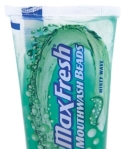You are currently browsing the category archive for the ‘Television’ category.
While this probably isn’t that ‘new’ a thing, it was something that I never even knew existed until a co-worker casually mentioned her past experience at FAO Schwarz when everyone was discussing the fact that Toys ‘R’ Us bought them out. (And since the previously mentioned acquisition, Disney’s bought up Marvel for $4 billion and Kraft went after Cadbury, but failed despite a $16 billion bid – doorcrasher sales on various international brands in the wake of an economic downturn… but that’s off topic).
So it turns out, FAO Schwarz in New York has a whole section of the sales floor that’s devoted to making your very own Muppet! The Whatnot Workshop has all kinds of different stations that allow people to mix and match different eyes, ears, noses – right down to accessories – to create a mixmatched customized Muppet that looks, works and feels like the real thing, as if Jim Henson himself had created a new character.
There used to be both an online and in-store Whatnot experience but since the May 2009 acquisition, the online platform has been scrapped and is in redevelopment. So, for now the only way to get your own Muppet is to boot down to NYC as it’s an exclusive feature that thankfully Toys ‘R’ Us has no intentions of dropping. The store will remain an FAO Schwarz as well, good considering its icon status for children everywhere and the fact that it’s been immortalized in films ‘o plenty.
In total there’s choice between three body types, 12 eyes, 12 noses, 13 hairstyles and 14 costumes (including The Statue of Liberty and a baseball uniform resembling that of the New York Yankees). Check out the photos below to see the real deal!
- Whatnot-Workshop
- Make-a-Muppet-FAO-Kit
- Whatnot workshop Muppets
- Whatnot Workshop
- Whatnot Workshop Sign
- Whatnot Workshop Aprons
- Whatnot Workshop Pieces Case!
- Whatnot Workshop Muppet Eyes!
- Whatnot Workshop Storage
Conversations by the water cooler at work usually tend to revolve around the previous night’s tv line-up or the latest headlines – depending on where you work. Even at my office, those are formidable topics at any given moment. But, one afternoon last week the topic up for discussion was memorable Family Guy one-liners which some how evolved into sound effects used in television shows and movies. Interestingly enough, we were all on the same page before the first example was even thrown out – we all were about to reference those crazy sound effects that you think you hear in just about every single thing you’ve ever seen. The one I’d noticed and triggered the next phase of conversation with was that female voice you hear on a police radio as the squad car pulls up to scene X. Then someone mentioned the Star Wars scream (as he referenced) it, so out of curiosity, we turned to Google so that we could bring what we were referencing to life (and also just to confirm that we weren’t a. crazy and b. hearing things).
Turns out, that Star Wars scream is actually called the Wilhelm scream and sure enough – we weren’t crazy. The search revealed that not only was it used multiple times; it was used so often that people have enough material to compile two and a half to four minute long montages! Films like Sin City, Batman, Lord of the Rings, Team America, Toy Story, Kill Bill and to bring it full circle, even Family Guy has paid tribute to the Wilhelm scream.
So where did the name come from? To find out, you need to go back to the 1950’s. The first film, of the now 140 which use the effect, was made in 1951 and was called Distant Drums, which eventually saw a number of soldiers get attacked by an alligator slinking around in the murky everglade waters. A total of six screams were recorded after the scene to be cut in later, under the recording title “man getting bit by an alligator, and he screams.” Ultimately, it would be the fifth of the six recorded that would be used in that part, though takes four and six, along with a repeat of five were used earlier in the same movie.
The Wilhelm’s fame came along with Ben Burtt who was the sound designer for the Star Wars films. Burtt re-discovered the sound effect mislabelled as, “Man being eaten by alligator,” and decided it was perfect for how a Stormtrooper would sound falling off a ledge in Star Wars IV: A New Hope. For the sake of reference, it was renamed the Wilhelm scream after Private Wilhelm, who was a character in 1953’s The Charge at Feather River. But that still doesn’t answer who’s voice it is.
Burtt took it a step further to find out and after going through papers at Warner Brothers, was able to determine that it likely belonged to singer/actor Sheb Wooley who had an uncredited role in Distant Drums but was also called back in a small group of actors to record a series of vocal additions during post-production.
Later this same day, over some celebratory cake for a colleague, the conversation turned to rare delicacies that were really ‘bizarre’ (not the disgusting delicacies – everyone talks about those). One of the folks in our office happens to have an Asian background being originally from Hong Kong and a long time ago, enlightened me about Bird’s Nest soup. So, this is what I decided to offer up to the group during this conversation. This soup has been made for 400 years and what’s a bit bizarre about it, besides its name? The fact that it’s actually made from a bird’s nest! The swiftlet to be exact. They’re mostly collected throughout Thailand from White-nest and Black-nest swiftlets who live in caves and can generate a nest in 35 days. The highest destination markets for these nests are Hong Kong and the United States where a kilogram of the white nest would go for about $2,000.00 USD and the red-blood nest would be about $10,000.00 USD. Per serving, that translates to $30.00 – $100.00 a bowl!
The industry has become so huge that concrete nesting houses have been built to give more venues for the birds to make the valuable nests in. While it’s appearance looks somewhat like a prison, investigating the species of bird revealed that they’re not the least bit endangered. The soup is said to have health benefits as well that include aiding digestion, raising libido, improving voice, alleviating asthma, and improving overall focus and immune support.
From screams to soup, there’s a lot more that you can talk about with your coworkers now around the water cooler besides the most recent episode of your favourite primetime show.
But, if these two items aren’t good enough conversation starters, you could combine them. How does that make sense? Check out this bird that has the vocal range to mimic everything around it. It’s called the Lyre Bird, and this clip was around the office following the swiftlet / bird’s nest soup discussion as another ‘interesting bird’. The debate is still continuing at work as to whether or not the chainsaw stretches the truth too far beyond belief, but I think this bird’s legit and awesome either way!




















